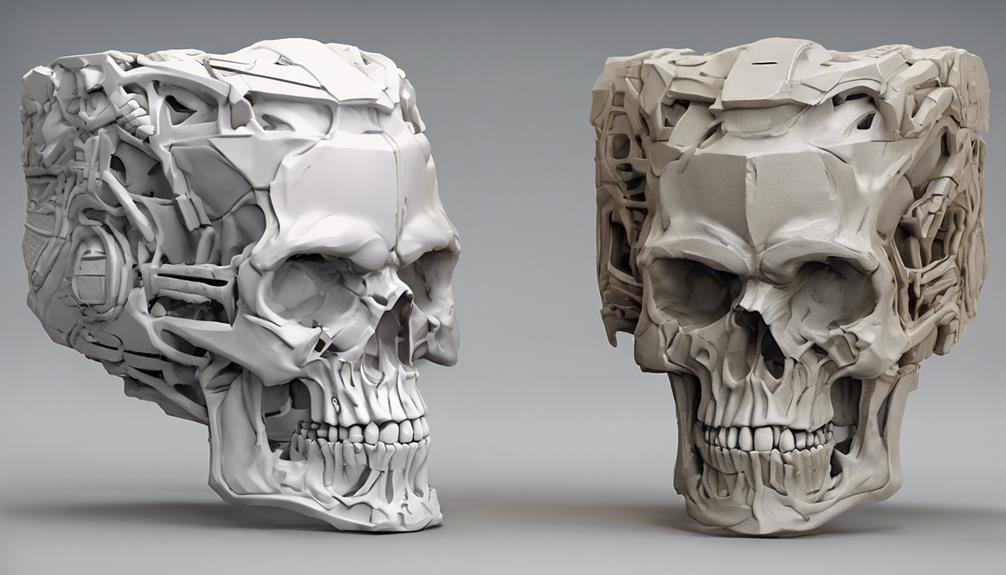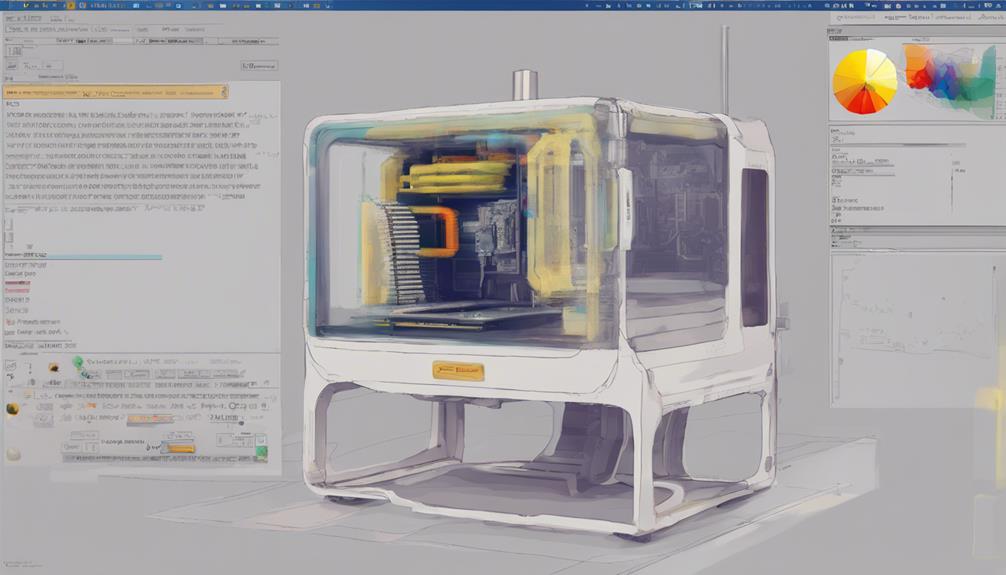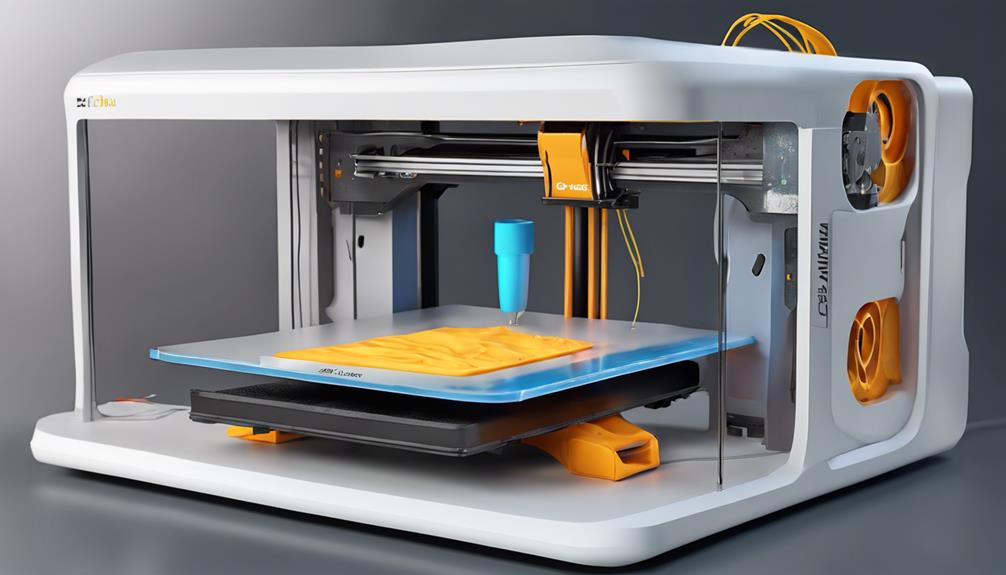In the domain of 3D printing, achieving perfection with ABS material through Cura is the key to accessing a new level of precision and quality. The intricacies of ABS printing paired with the optimization techniques within Cura present a formidable challenge to those seeking flawless results. Understanding the importance of material properties, calibration, and fine-tuning parameters is just the beginning. Stay tuned to uncover the secrets that could elevate your ABS printing game and set you on the path to mastering this intricate process.
Material Properties and Comparison

In the domain of 3D printing, comprehending the material properties and comparison between ABS and its variant ASA is vital for achieving successful and efficient printing results.
ABS, known for its propensity for warping and delamination due to expansion and contraction when molten, requires an enclosure and good bed adhesion for mitigation. Additionally, ABS emits fumes and particles during printing, necessitating ventilation or protective filtering.
In contrast, ASA, a variant of ABS, exhibits reduced warping, delamination, and emits fewer fumes, making it increasingly popular. While ABS offers a broad temperature range and high impact strength, ASA provides UV resistance, making it suitable for outdoor applications.
Understanding these distinctions is important for selecting the appropriate material for specific printing needs.
Printing Parameters and Optimization
What key considerations should be made when optimizing printing parameters for ABS printing using Cura?
When fine-tuning ABS printing settings in Cura, factors such as layer height, printing temperature, bed temperature, and cooling settings play important roles.
Adjusting the layer height impacts print time, detail, and strength, with thinner layers aiding in reducing delamination. Finding the best printing temperature is essential for ensuring proper layer adhesion and detail quality.
Additionally, setting the correct bed temperature is necessary to prevent warping and enhance bed adhesion for successful ABS prints.
Additionally, configuring the print cooling settings can help mitigate layer separation and warping issues.
Cura Profile Setup for ABS Printing

Consider utilizing Cura's preset ABS profiles to streamline the setup process for best ABS printing. By enabling Cura's default ABS profile or utilizing built-in brand profiles, you establish a solid foundation for successful prints.
If your printer's brand isn't listed, starting with a generic ABS profile can still provide valuable baseline parameters. These profiles cover essential settings like printing and bed temperatures, cooling, and more, saving time on initial setup and optimization.
Making minor adjustments to these profiles can further enhance your print quality. Leveraging Cura's profiles guarantees a smoother shift into ABS printing, setting the stage for fine-tuning specific parameters to achieve exceptional results.
Layer Height and Retraction
To explore further into achieving the best ABS printing results, understanding the significance of layer height and retraction becomes essential. Lowering the layer height to nozzle size ratio can enhance the strength of ABS prints while using thinner layers helps prevent delamination. Retraction tuning and settings adjustment are vital in reducing stringing issues. A stringing test can help fine-tune retraction values, typically starting at 3 mm for direct drive setups and 6 mm for Bowden setups. An initial retraction speed of 25 mm/s is recommended. The table below summarizes the key points for optimizing layer height and retraction settings in ABS printing:
| Key Point | Recommendation |
|---|---|
| Lower layer height ratio | Increase strength |
| Thinner layers | Prevent delamination |
| Retraction tuning | Reduce stringing |
| Stringing test | Adjust retraction values |
| Initial retraction settings | 3 mm for direct drive, 6 mm for Bowden |
Bed Adhesion and Enclosure

Utilizing effective bed adhesion methods and implementing an enclosure are key factors for optimizing ABS printing outcomes. Maintaining the bed temperature slightly above the filament's glass transformation point is essential for enhancing adhesion.
Techniques such as using brims, skirts, or rafts can aid in improving bed adhesion for ABS prints. Additionally, applying adhesion promoters like glue stick, hairspray, or painters tape on the print surface can further enhance adhesion.
Furthermore, an enclosure plays an important role in ABS printing, especially when dealing with larger models. The enclosure helps in maintaining a stable and warm printing environment, reducing the chances of warping and promoting successful print outcomes, particularly with ABS filament.
Frequently Asked Questions
How Can I Prevent ABS Parts From Warping During Printing?
To prevent ABS parts from warping during printing, guarantee proper bed adhesion by using a heated bed above the glass transformation temperature of ABS. Implement an enclosure to maintain consistent temperature, reducing warping and promoting successful ABS print outcomes.
What Post-Processing Techniques Can Enhance ABS Prints?
Post-processing techniques like acetone vapor smoothing can enhance ABS prints by making them smooth. Additionally, painting or applying coatings can improve aesthetics. Sanding and polishing can remove imperfections. UV-resistant coatings can protect ABS parts from UV degradation.
Is ABS Filament Safe to Use Indoors Without Ventilation?
ABS filament may emit fumes and particles while printing, requiring proper ventilation or protective measures indoors. To guarantee safety, consider utilizing ABS in a well-ventilated area or implementing suitable filtration systems to mitigate potential health risks.
Can ABS Be Used for Food-Safe Applications?
ABS, including its variant ASA, is not recommended for food-safe applications due to potential chemical leaching. While ABS offers strength and durability, it is not food-grade certified. Consider PLA or PETG for food-related prints.
How Does ABS Compare to Other Filaments in Terms of Flexibility?
ABS offers moderate flexibility compared to other filaments like PLA and TPU. While not as flexible as TPU, ABS can bend without breaking, making it suitable for applications requiring a balance between rigidity and some degree of flexibility.
Conclusion
To sum up, mastering ABS printing with Cura requires a deep understanding of material properties and precise optimization of printing parameters. By following the outlined Cura profile setup and focusing on factors such as layer height and bed adhesion, achieving absolute perfection in ABS prints is within reach.
Embracing these techniques will not only enhance the quality of prints but also streamline the printing process, making ABS printing a rewarding endeavor for enthusiasts and professionals alike.